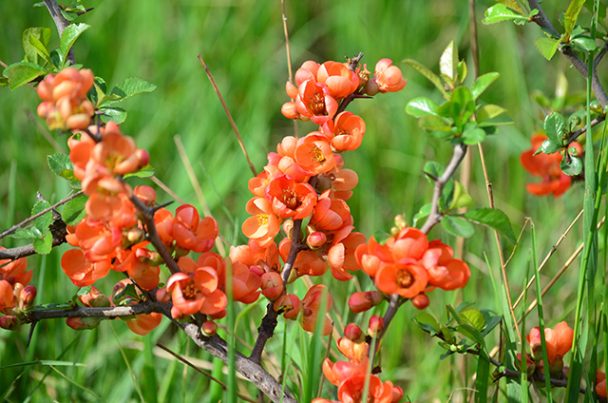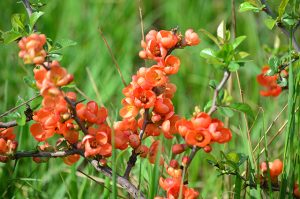
Chinese Quince — sources, health benefits, nutrients, uses and constituents at NaturalPedia.com
Thursday, September 28, 2017 by Frances Bloomfield
http://www.naturalpedia.com/chinese-quince-sources-health-benefits-nutrients-uses-and-constituents.html

Chinese quince (Pseudocydonia sinensis) is a small, deciduous tree native to China and a close cousin of the common quince (Cydonia oblonga). This plant can be identified by its small, pink-colored flowers, and golden fruits that appear similar to pears in terms of shape and consistency. As such, Chinese quince is most frequently grown for ornamental and culinary purposes.

List of known nutrients
According to Slism.com, Chinese quince fruit is a good source of potassium and vitamins C and E, with 175 grams (g) contributing 472.5 milligrams (mg) of potassium, 43.75 mg and 1.05 mg of vitamins C and E respectively. Moreover, Chinese quince is naturally low in fat and sodium, yet known to contain many other important nutrients such as:
- Calcium
- Copper
- Fiber
- Folate
- Iron
- Magnesium
- Manganese
- Phosphorus
- Vitamin A
- Vitamin B1 (Thiamine)
- Vitamin B2 (Riboflavin)
- Vitamin B3 (Niacin)
- Vitamin B5 (Pantothenic Acid)
- Vitamin B6 (Pyridoxine)
- Zinc
Medicinal uses for Chinese quince
Thanks to its rich vitamin C content, Chinese quince can relieve the more painful symptoms of arthritis and rheumatoid arthritis. This is because vitamin C in large doses have a potent anti-inflammatory effect that affects inflammation throughout the body, the joints included. Moreover, vitamin C is a potent antioxidant that can neutralize the molecules which trigger inflammation, as well as boost collagen synthesis to strengthen joint tissues and bones.
In addition to its vitamin C content, the potassium content of Chinese quince is notable as well. This makes Chinese quince an effective preventative measure against high blood pressure, which usually results from hardened blood vessels and arteries. Potassium relaxes the arteries and blood vessels, lowering the risk of high blood pressure and reducing the strain placed on the cardiovascular system. As a result, this minimizes the chances of other heart conditions such as stroke and heart attack.
Chinese quince mixed with honey is purported to be a decent remedy against a variety of gastrointestinal disease such as constipation, diarrhea, and colitis. This can be attributed to the fiber content, as fiber is a nutrient most famous for its positive impact on the digestive system and related disorders.
In traditional Chinese medicine, Chinese quince seeds are often soaked and boiled to make into a jelly that’s said to be an effective remedy for liver and eye problems. In fact, Chinese quince is believed to strengthen the liver.
Body systems supported by Chinese quince
Chinese quince has a notable concentration of vitamins C and E, both of which are antioxidants that boost the function of the immune system.
Thanks to the high levels of antioxidants and vitamins, Chinese quince can benefit the skin and hair as well, as it can prevent these from sustaining damage that would degrade their appearance.
Ways to use Chinese quince
Chinese quince fruit has a tart, somewhat citrus-like flavor that makes it slightly difficult to consume raw. Cooking can subdue this tartness, however, so Chinese quince is best eaten after it’s been cooked. Chinese quince can be used to make a jam or jelly, though it can be added to all kinds of recipes that call for the inclusion of hints of citrus and tartness, such as a paste or pie or compote.
Where to learn more
- Forbidden Fruit- 7 Incredible Health Benefits Of Quince Fruit
- Fresh.news
- Fruits.news
- Herbs.news
- SuperFoodsNews.com
Summary
Chinese quince is a fruit-bearing plant that has numerous health benefits. Its plethora of nutrients allows it to soothe or prevent arthritis, gastrointestinal disease, and liver and eye conditions, as well as nourish the immune system, skin, hair, and digestive system.
Sources include:
ATreeADay.com
Slism.com
StyleCraze.com
OrganicFacts.net
SimplyRecipes.com
Tagged Under: Tags: Chinese quince





